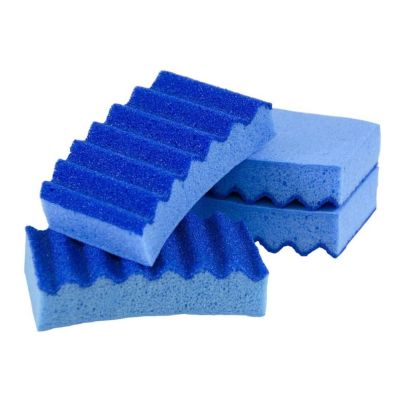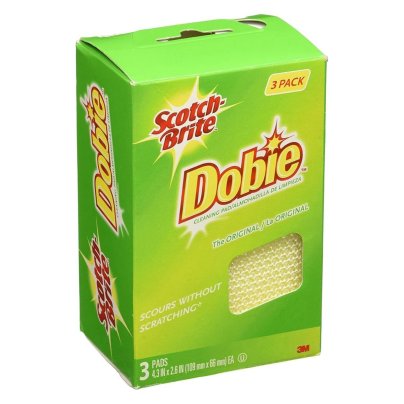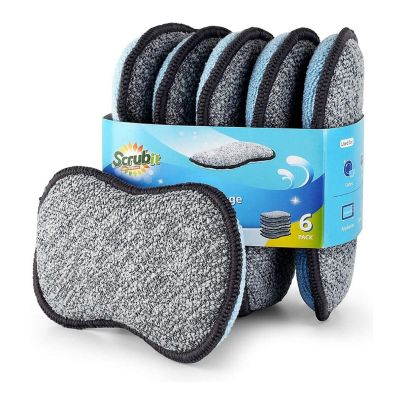We may earn revenue from the products available on this page and participate in affiliate programs. Learn More ›
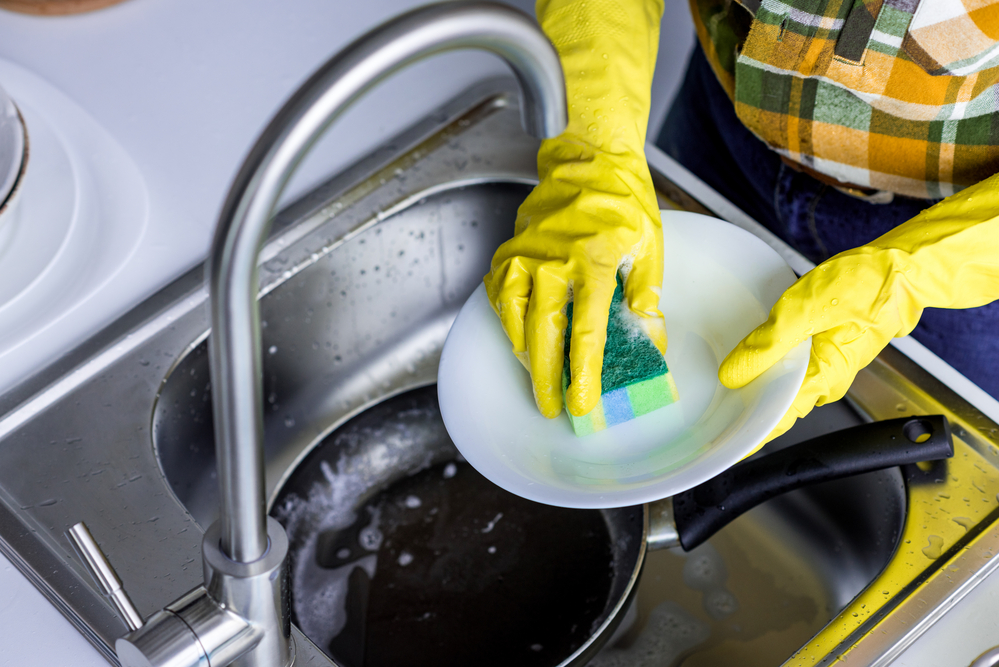
Sponges are an ancient solution to everyday cleaning and hygiene needs. The Greeks and Romans used sea sponges—real living creatures—for bathing and housekeeping. In modern times, sea sponges have been replaced by artificial and plant-based materials that serve as dense, absorbent pads for scrubbing dishes, kitchen and bath surfaces, and more.
We’ve scoured the market—pun intended—for the best dish sponge options out there, selecting the following five as our top favorites:
- BEST OVERALL: Lysol Multi-Purpose Durable Scrub Sponge, 4 Pack
- BEST FOR LIGHT DUTY: Scotch-Brite 3PK Dobie Cleaning Pad
- BEST FOR HEAVY DUTY: Scrub-It Multi-Purpose Scrub Sponges for Kitchen
- MOST ECO-FRIENDLY: Miw Piw Natural Dish Sponge Pack 3 Vegetable Scrubber
- HONORABLE MENTION: Panyee Natural Plant Based Scrub Sponge 12 Pack
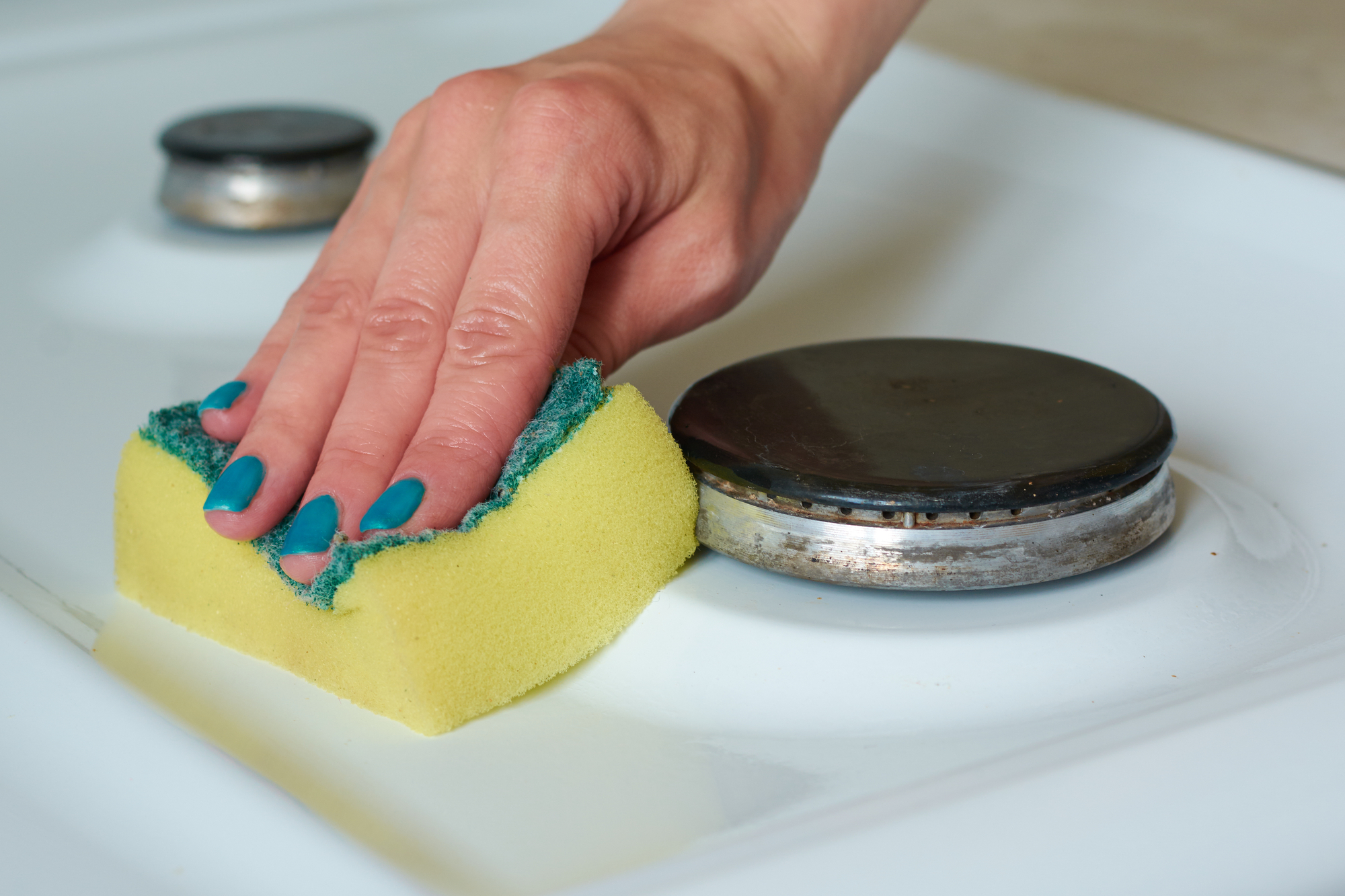
Before You Buy a Sponge
It’s now a widespread fact that kitchen sponges are among the dirtiest places in your home. A well-publicized study in 2017 showed “massive colonization” of kitchen sponges by a range of disease-carrying bacteria, leading to concern over how to properly sanitize these heavily-used implements properly.
Replace or Sanitize Sponges Regularly
All sponges should be sanitized, or tossed, weekly. That’s right. In many cases, you should follow the recommendations to replace kitchen sponges on a very regular basis. That’s why it’s so important to choose a sponge that is good for you—and the earth—to lessen the burden of waste in our landfills.
There are three basic ways to sanitize and degerm your kitchen sponge. You can also practice a combination of all three methods. While some sponges are embedded with odor-fighting, bacteria-fighting chemicals, you’ll still need to sanitize or replace them regularly.
- Wash: Many sponges are designed to throw in your dishwasher for a deep clean. You’ll probably want to run a separate, heavy-duty load, using antibacterial settings. Some sponges can also be machine washed and dried. Again, you’ll want to launder them separately, or with other cleaning cloths and shop towels.
- Disinfect: Choose bleach if your aim is to kill as many disease-carrying bacteria as possible. Soak your sponge in a gallon of water mixed with a cup of bleach solution for at least five minutes. Rinse very thoroughly with clean water and soap.
- Toss and Replace: This is the most effective way to rid your kitchen of germs and recommended by many health experts. Again, if your kitchen sponge isn’t heavily used, feel free to try other methods of sanitizing. But be sure to replace your sponge at least monthly, if not more frequently.
Please note that microwaving your sponge is not suggested. Recent studies indicate that while some bacteria are eliminated in the microwave, it may not kill the smelliest or most dangerous strains.
Key Shopping Considerations
Buying a kitchen sponge should be an easy decision, right? But with so many different brands and varieties on the market, there are a few factors to weigh before making your choice.
Material and Shape
Material is the most important sponge feature as it determines not only how effective a sponge is, but also how nonabrasive, sanitary, odor-free, and ecological. You have several options, including:
- Polyester and nylon: These synthetic fibers can be woven into a highly durable, absorbent material that forms the spongy core of many kitchen sponges. These material options are great for heavy scouring without losing their integrity, and they can be sanitized easily. On the downside, polyester and nylon are plastics and can contribute to environmental damage and landfill waste.
- Microfiber: This man-made material is composed of polyester, polyamide, and polyurethane weaved into dense, electrically charged fibers. These fibers attract dirt, microbes, and other tiny particles, even some viruses. The result is an ultra-deep clean, with antibacterial properties. Even better, microfiber sponges won’t damage most surfaces, including nonstick cookware, countertops, glass, ceramic, and stainless steel. They also last longer than most other sponge material.
- Cellulose: Plant-based sponges are primarily composed of wood pulp and other plant fibers. Some sponges also use wild loofah, a cucumber-like plant that, when dried, forms a dense mesh surface, perfect for scrubbing without scratching surfaces. Cellulose sponges are generally more eco-friendly than other material. They disintegrate easily into organic matter and can be composted.
In terms of shape, rectangular and ovoid sponges each have their benefits. Rectangular sponges fit easily into your hand, and also have corners, to scrub crevasses and fork tines, for example. Oval, hourglass, and teardrop sponges should also fit into your hand and provide enough surface area to clean sinks, countertops, cooking surfaces, and cookware effectively. Teardrop sponges may also contain a built-in loop and can be hung up to dry.
Scouring Power
Many kitchen sponges feature two sides: a soft, spongy side, and a rougher, scrubber side. A double-sided sponge has the benefit of offering you two cleaning tools in one. It is especially helpful if you have antiques, granite countertops, or nonstick surfaces that may be damaged by too much abrasion.
Cellulose and microfiber sponges may or may not have two sides. Fortunately, they are typically nonabrasive, so they can likely be used to clean most surfaces, including nonstick cookware. However, you’ll want to double-check brand instructions to ensure surface safety.
Longevity and Biodegradability
Not all sponges are created equal—especially where quality, longevity, and eco-friendliness are concerned. Plastic-based sponges, made of polyester and nylon, may or may not be recyclable, and if thrown away, will not degrade as easily or quickly as cellulose sponges. If you are using your sponge for cleaning purposes beyond dishes and cookware, choose microfiber, which lasts a long time, so you’ll have to replace it less often.
Also, be aware of “greenwashing,” when manufacturers add eco-friendly jargon to product packaging without actually changing the product for the better. This problem plagues some sponge brands, so we’ve taken care to look into the products we’ve selected to ensure they are better for the environment than most alternatives.
Our Top Picks
We’ve narrowed the wide range of available options down to the below list of the very best. These well-made products can be reused multiple times and replaced regularly to cut down on bacterial growth and ensure food safety.
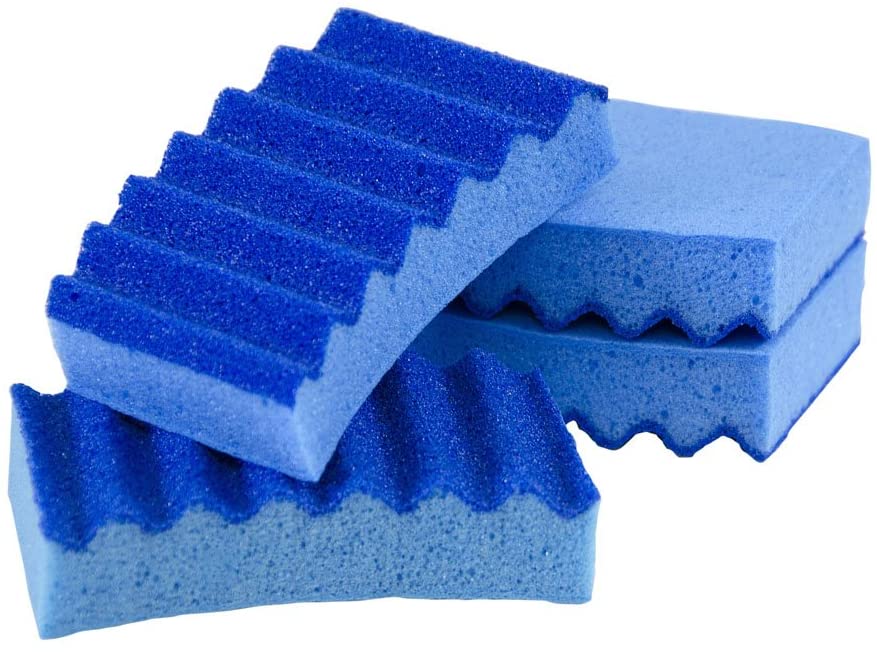
1. BEST OVERALL: Lysol Multi-Purpose Durable Scrub Sponge, 4 Pack
Nobody likes the funky, musty odor that builds up in kitchen sponges over time. That’s where Lysol comes in—not the spray, but the sponge. Lysol sponges contain a built-in deodorizing agent that won’t wear off over time, providing continuous sanitizing protection and odor-busting power. Safe to use on most household surfaces, make sure you test the dark blue “scrubber” side before scouring pots and pans coated with non-stick, stainless steel, or wood. The one downside is: This four-pack comes wrapped in plastic. Otherwise, the sponges last and inhibit the growth of odor-causing bacteria. Be sure to still sanitize with bleach, or toss and replace after heavy use.
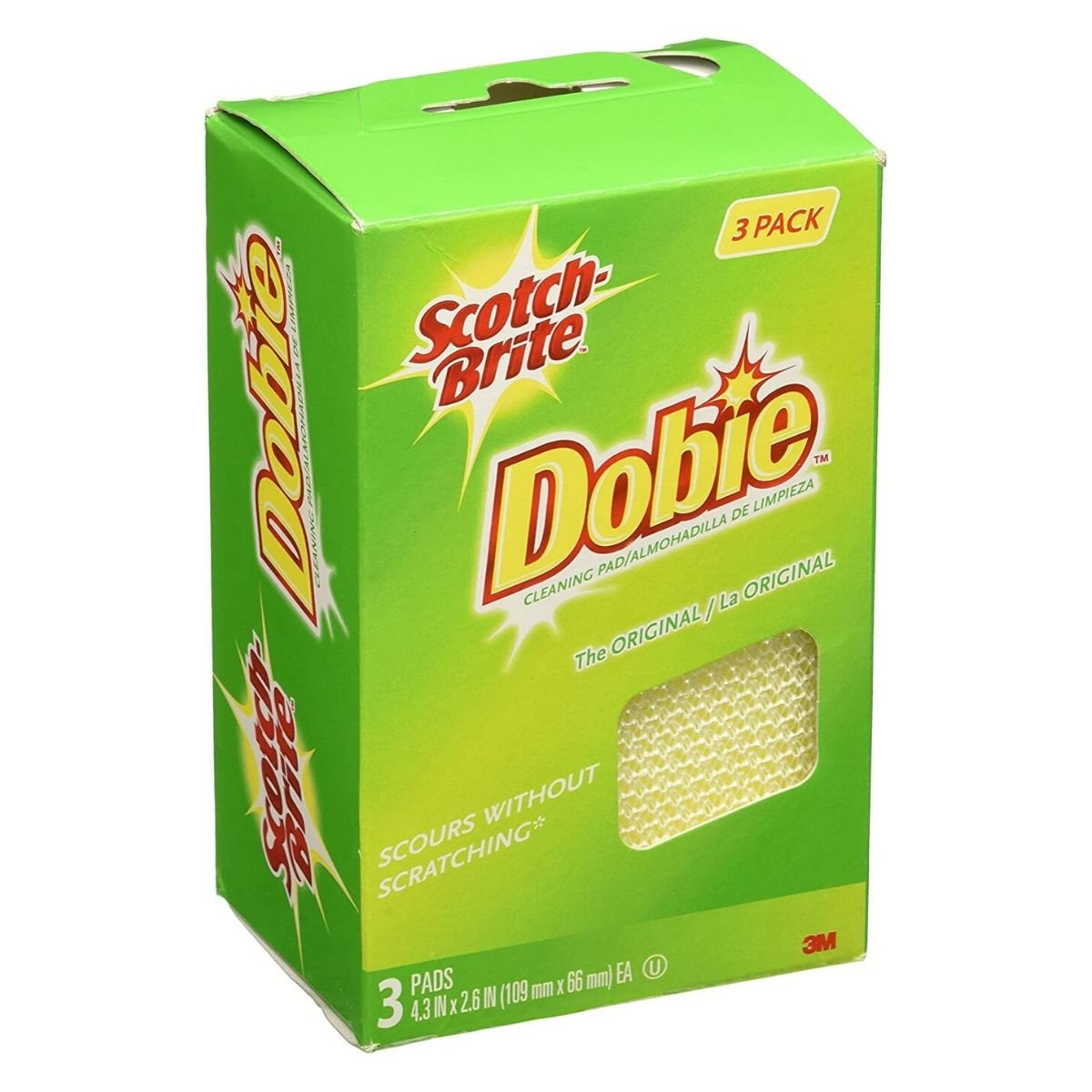
2. BEST FOR LIGHT DUTY: Scotch-Brite 3PK Dobie Cleaning Pad
Scotch-Brite’s yellow, polyurethane-based scouring pads are gentle on cookware, including stainless steel, Teflon and Silverstone. Encased in mesh, these pads lessen the elbow grease you’ll need for a thorough clean without scratching surfaces. The unique textures of this pad—foam core and mesh casing—effectively sucks away food and dirt particles, leaving spotless results behind. Each cardboard box comes with three pads. Easy to sanitize with a bleach soak, these sponges also resist odor longer than most. Great for uses beyond the kitchen too.
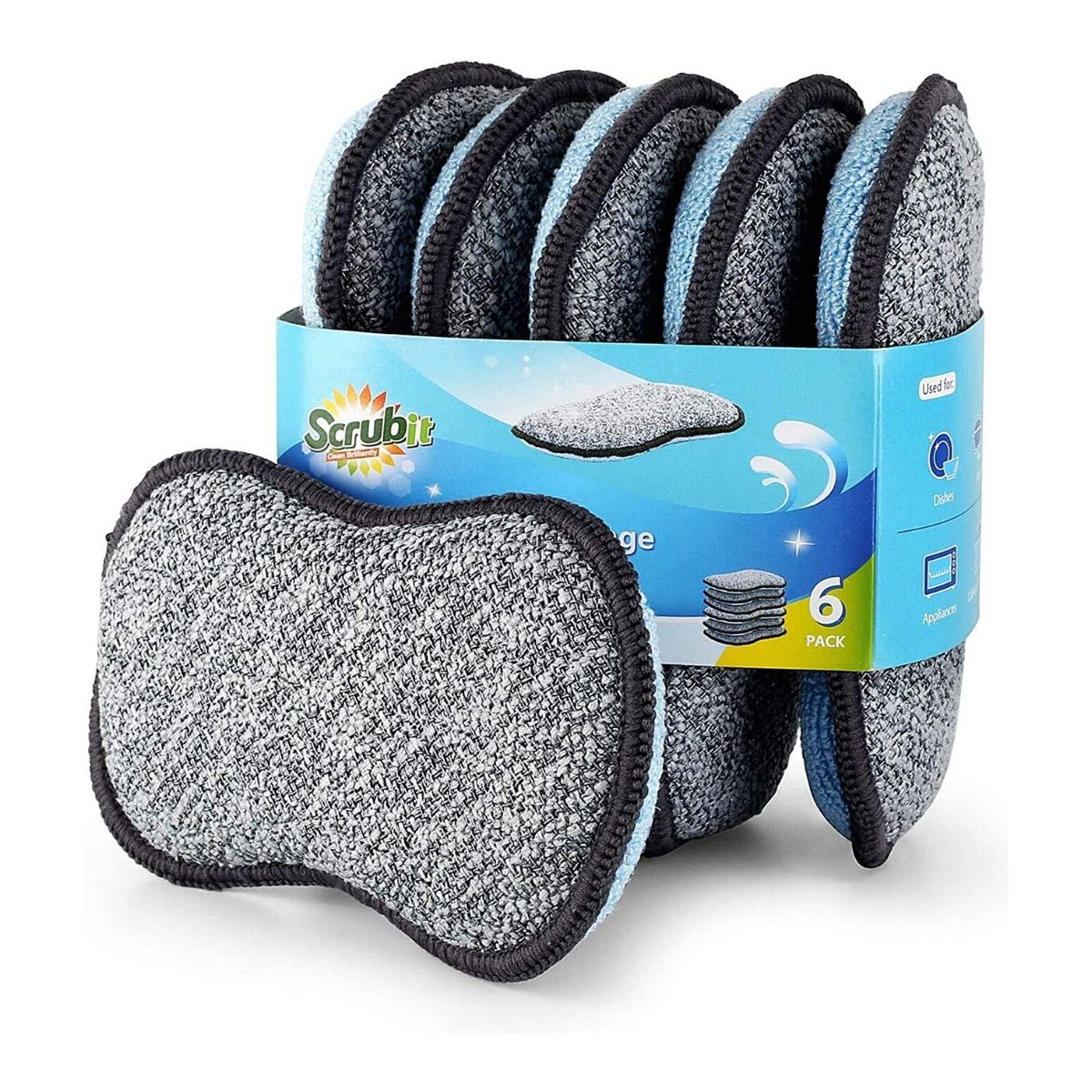
3. BEST FOR HEAVY DUTY: Scrub-It Multi-Purpose Scrub Sponges for Kitchen
If you thought microfiber was just for dusting, think again. Scrub-It’s multi-purpose, microfiber sponges help you clean smarter, not harder, thanks to the microscopic power of tiny, electrically charged fibers. Made of high-quality polyester, polyamide, and polyurethane, these sponges won’t wear out quickly and are 100 percent safe to use on cookware and other home surfaces. They are also machine washable and can be tossed in the dryer for extra sanitizing. Six sponges come in a pack, and you can choose from two sizes, small or large.
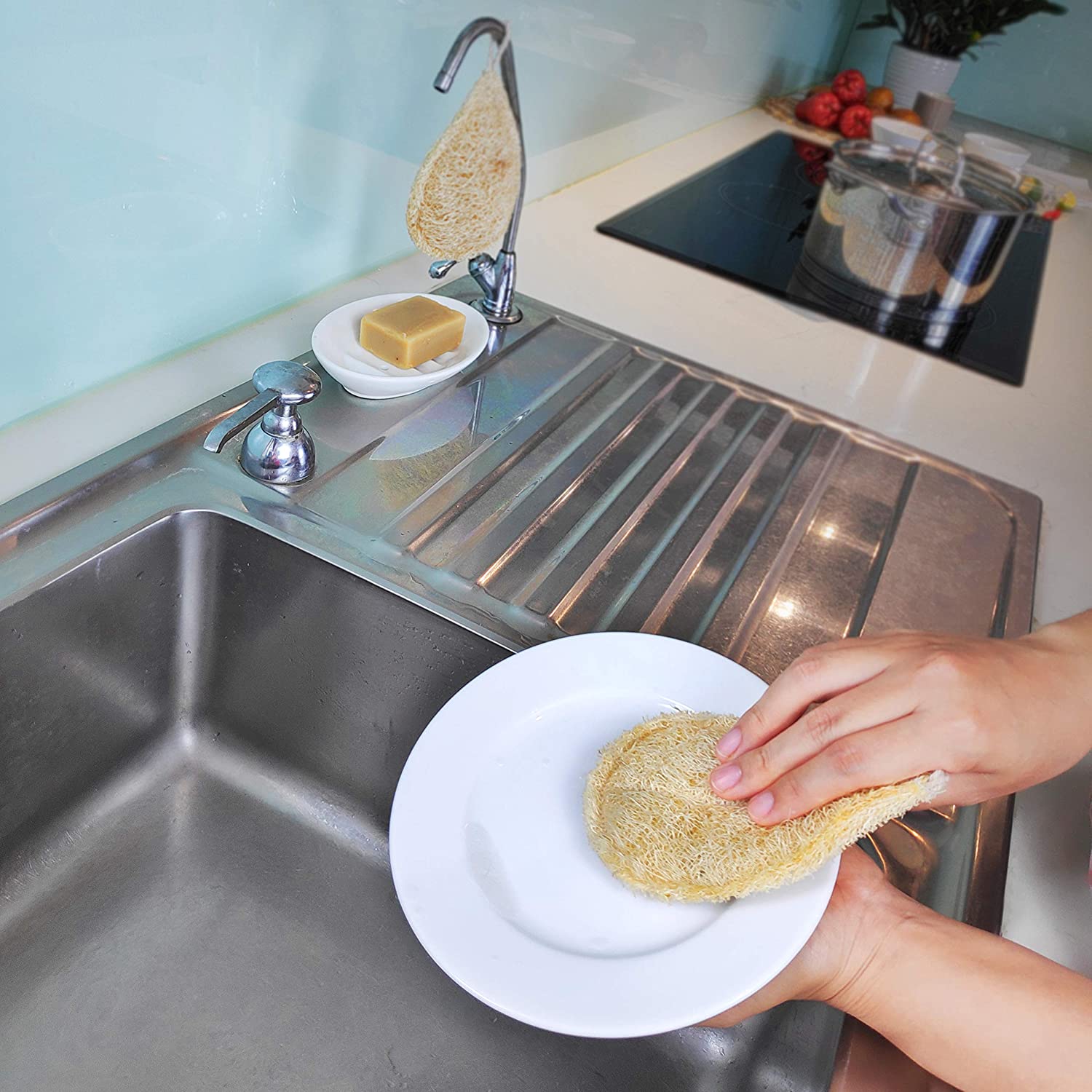
4. MOST ECO-FRIENDLY: Miw Piw Natural Dish Sponge Pack 3 Vegetable Scrubber
Worried about plastic clogging up our landfills and oceans? Choose Miw Piw’s plant-based sponges, shipped to you in brown paper packaging. Made of loofah fibers, the scrubbers are organic and long-lasting. The four spongy layers are sewn together in a way that’s easy to clean and won’t trap food particles. Safe and nonabrasive for nonstick cookware, as well as glass and ceramic items, Miw Piw’s natural dish sponges are pretty and practical. When they’ve reached the end of their life span, recycle or compost. Read brand instructions for sanitizing with boiling water.
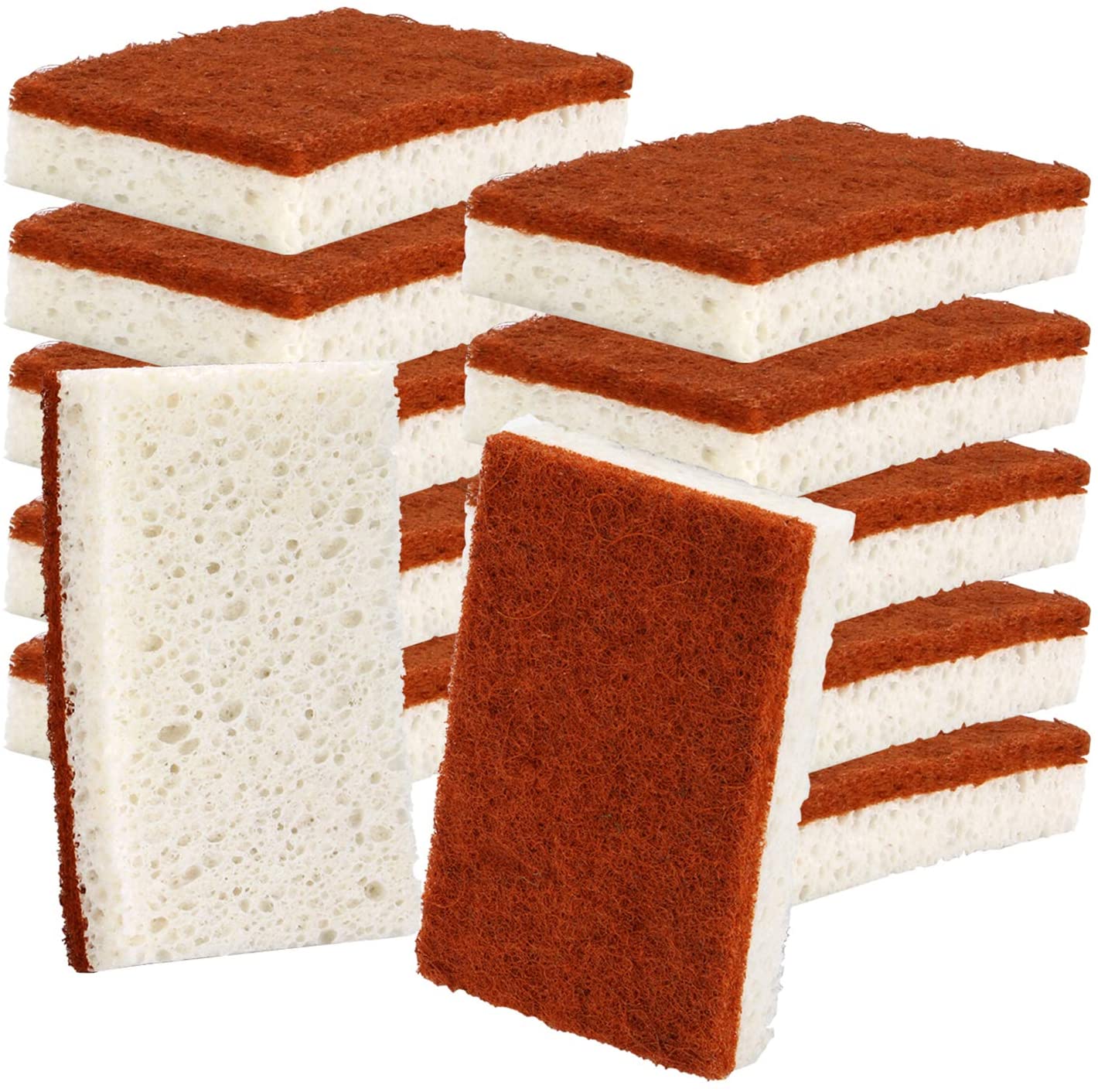
5. HONORABLE MENTION: Panyee Natural Plant Based Scrub Sponge 12 Pack
For an affordable, ecological, and effective solution to all your kitchen clean-up needs, choose Panyee’s plant-based sponges. Made of natural palm fiber and wood pulp, with a walnut-based scrub pad on one side, Panyee’s sponges come in a 12-pack so you can toss and replace easily if needed. These rectangular scrubbers also have a soft side, for use on more delicate surfaces. Their ultra-compressed material last a long time, and once you’ve thoroughly worn out your sponge, you can compost too—the plant fibers will disintegrate into the soil to reduce landfill waste. Plus, they’re not packaged in plastic, which further reduces waste. Sanitize by throwing them in the dishwasher.
